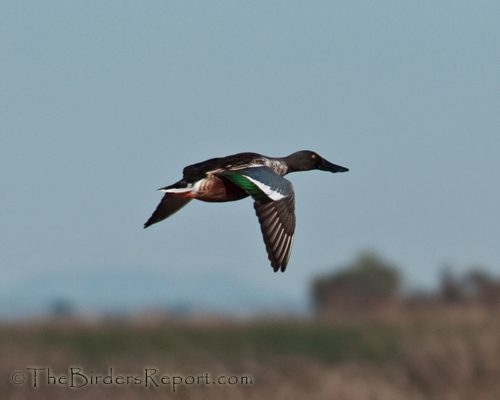 Northern Shoveler Drake (Anas clypeada) in Flight photos by Larry Jordan
Northern Shoveler Drake (Anas clypeada) in Flight photos by Larry Jordan
I stopped at the Sacramento National Wildlife Refuge over the weekend to see how the waterfowl migration was commencing. I discovered hundreds, maybe over a thousand, Greater White-fronted Geese and hundreds of Northern Shovelers (Anas clypeada), Northern Pintails and Gadwalls, with a smattering of Mallards, American Wigeon and Cinnamon Teal.
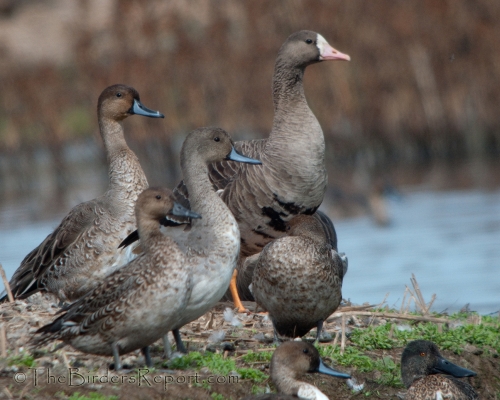 Click photos for full sized images.
Click photos for full sized images.
Of course these dabbling ducks are all in non-breeding plumage and brought their young ones along with them making them a bit tougher to identify. The Northern Pintails in the photo above can be identified by their blue-gray striped bills and the juvenile male Northern Shoveler in the lower right hand corner by his wide spatulate bill and yellowish-brown iris on its way to the bright yellow color of the adult drake.
The female Northern Shoveler is recognized by her spatulate bill as well. This is a photo from last weekend in her non-breeding plumage.
This is what she will look like in February, in breeding plumage, at which time she will surely have paired up with a drake.
This is an immature male showing a more brownish mantle (back feathers), a rather brownish iris and a bill turning from orange to black.
And and adult Northern Shoveler drake in non-breeding plumage
These guys will soon transform into the drakes we can all recognize in their breeding plumage.
Note the iridescent green/black head, white breast and chestnut belly and flanks. In flight (see top photo) they show a large blue patch on the forewing, with a white stripe on the trailing edge and an iridescent green speculum.
But, like I have said, the Northern Shoveler can be most easily identified in any plumage by their spatulate bill. I mean, come on, it is so big and wide, it makes them look like they are going to tip over head first.
These dabbling ducks have that bill for a reason though, it has to do with the way they feed of course.
Even though Northern Shovelers will stick their heads under the water to feed as seen in this video…
they spend most of their foraging time straining small swimming crustaceans from the water.
Those wide, elongated, spatulate bills have a series of comblike lamellae along the lateral edges1 that are perfect for filtering those small invertebrates from the water.
Of course, like all dabbling ducks, the Northern Shoveler will stick its tail in the air, showing those bright orange legs, to feed on the bottom 😉
For more great bird photos from around the world, check out World Bird Wednesday!
References: 1Birds of North America Online

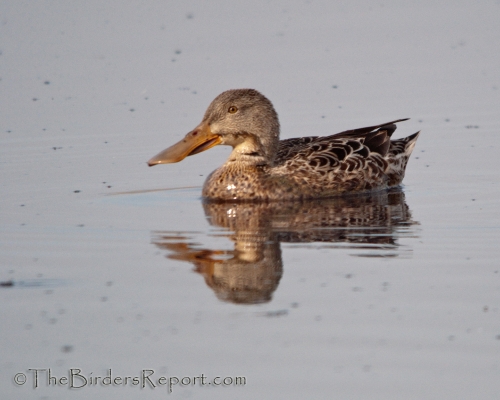
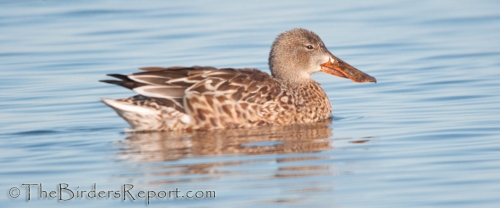
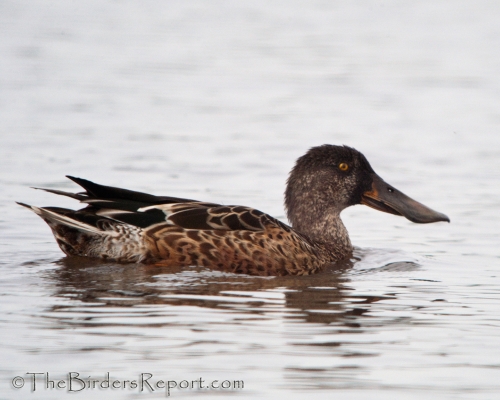
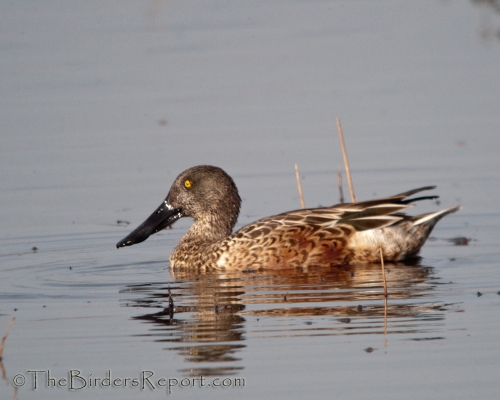
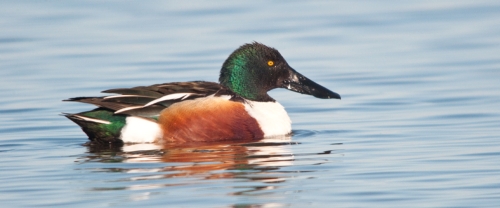
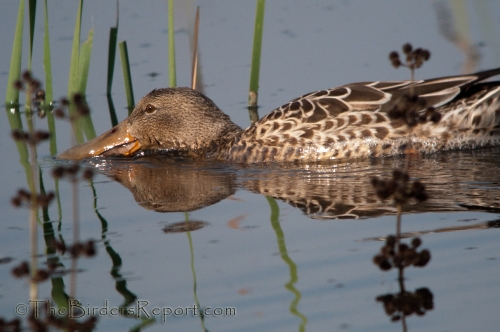
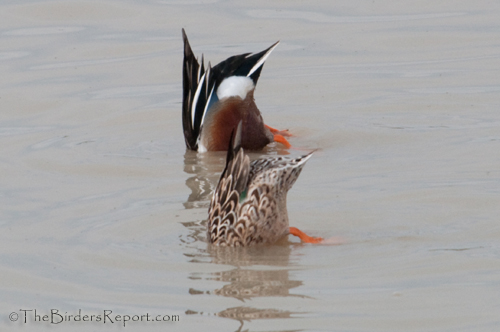








Comments on this entry are closed.
Great photos of a very interesting duck. The different plumages are all beautiful.
i love these guys! unmistakable. 🙂 had some do a stopover here on their way south winter before last. stayed 4 days as we had an ice storm. they were with gadwalls, green-wing teals, widgeons and a few others.
They are cute looking ducks, I love their neat looking bill. I am looking forward to see the ducks arrive here. Great photos and video Larry!
Great report and I.D. tips on this unusual duck! Nice photos too!
Nice collection of ducks here:)
a superb post really giving great insight into this superb duck species with lovely images supporting it
What more could we ask for? Video, great information, and excellent stills. Like most people I am taken with the charismatic Northern Shoveler and it’s outlandish bill. I am hoping to get in the field to see some of the great sights surrounding migration that you have graced us with this week. The weather looks great to boot!
BTW Your solution to the little problem you Emailed me about seems to have worked out well.
Cheers to you Sir!
Wonderful, informative post!
I love the stylish blue bill. Wish they would visit my water garden!
Hi – there have only been a few sightings of the Northern Shoveler in Australia – we have our own species, with the same sort of bill.
Cheers SM
That video is a sight to see! Those NS look like a crew that’s vacuuming the lake! Thanks for the info on that striking bill.
I just love the bills on Shovelers and your photos show them very well. Very informative post!
Great sequence!! Boom & Gary of the Vermilon River, Canada.